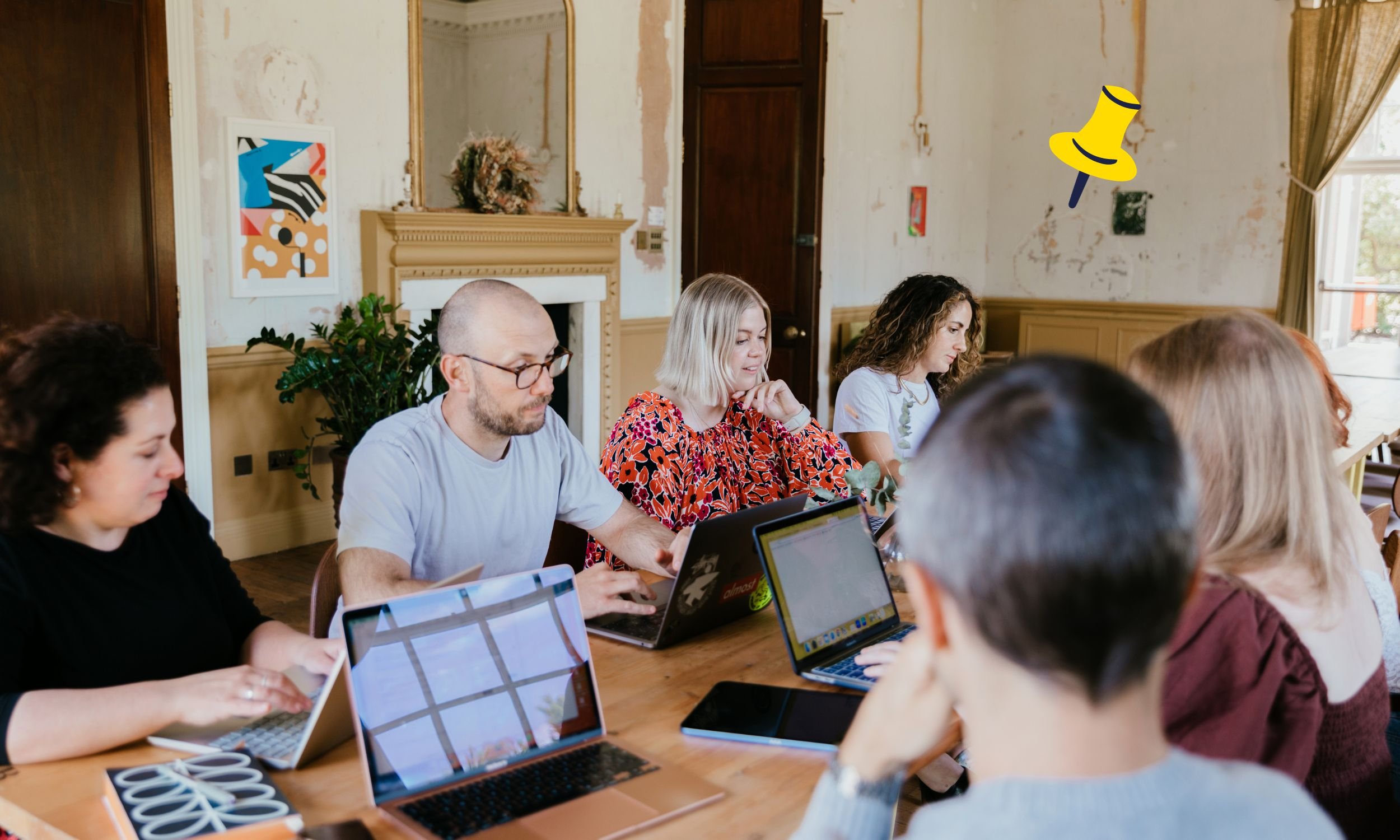How to Use Pinterest as a Business
In our opinion, Pinterest is one of the most underrated social media platforms available to businesses. Not only is it a visual treasure trove for planners, thinkers, and dreamers, but it’s also one of the most important search engines. Unlike other social media platforms, Pinterest content has serious longevity. The average pin has a lifespan of 6 months to a year, which is far higher than that of an Instagram post which has mere hours before being swallowed into the depths of the platform.
However, despite all its bonus points, we find clients often neglect Pinterest for their business, overlooking it as a personal pinboard rather than a business-driving machine. We’re here to give you the low-down on how to use Pinterest to grow your business, buckle up it’s about to get pinny.
The Basics
Let’s start with the basics, Pinterest is a visual platform, and the value of words is only important as an SEO factor, so no need to get caught up on crafting the perfect witty captions! Pinterest has a few forms of pins you should get yourself familiarised with:
Standard Pins: For your everyday static pin, the best dimensions are either, 1000 x 1500px or 1000 x 2100px depending on the content.
Idea Pins: Introduced in 2021, these dynamic pins have a more Instagram Story/Reels/TikTok feel about them. Mixing stills, videos, and graphic overlays, these pins are great for reaching big audiences quickly. You’ll want a 1080 x 1920px frame for this one!
Carousel Pins: Like an Instagram carousel, this is a standard pin with a few frames - you typically would use these within paid advertising.
The thing with Pinterest is that it’s a long game, it is highly unlikely that a pin you post is going to reach an audience of 1000s within just a few hours. But give it a good time, and you’ll start to reap the rewards. Lots of prospective pinners lose momentum because they don’t get the instant gratification they do from other social media platforms. Patience is very much a virtue with Pinterest, but it is 100% worth it (we promise).
A question we often get asked about Pinterest is how often should you be uploading content to it. Simply put, as with any platform, give what you can actually spare. There is no point in tiring yourself out to get content up every day if that is not something you can actually sustain. The idea with Pinterest is to upload a steady stream of content rather than bulk posting every 5 months. But, it also is not a platform that will punish you if you miss a week or two, after all those pins you’ve previously posted are still working hard for you.
Now we’ve got the basics under wraps, let’s dive into our top tips for using Pinterest as a business:
Make it a habit (it doesn’t pay off quickly):
We cannot recommend getting into a habit with Pinterest enough, a habit of planning, creating, and scheduling. It’s not a platform you need to be constantly present on, like Instagram or TikTok - so there’s absolutely no hard in spending a few hours every month bulk creating your content, scheduling it, and letting it do it’s thing. This makes this a very exciting and useful platform for busy business owners right?
Repurpose content
Time is precious when you’re running a business, and there are definitely some shortcuts you can take when creating your Pinterest content. Whilst not everything you create for other channels will be good for Pinterest, you’ll probably find a fair bit will be.
Showing off a new interior design project via a carousel on Instagram? Break it up, resize it accordingly, and schedule those images, with good SEO descriptions on Pinterest. The best bit? You can link back to that project directly from the images. Win-win.
Just did a reel on how to make the perfect coffee. Wonderful, pop over to Pinterest and upload it as an idea pin. You’ll be pushing that reach much further, with still just one piece of content.
Link well
Every time you post a pin you can link it back to your website, hello traffic! It’s important to link your content well, for instance, if you’re a graphic designer who’s posted a colour palette, link back to a blog post about how to choose your own colour palette. It’s relative and will help further educate your audience!
If you haven’t a direct link, even linking back to your homepage or portfolio is a good idea, don’t leave that link open… you never know which pin might take off.
Pay attention to trends
Trends on Pinterest are very different from trends on other platforms such as TikTok and Instagram. Pinterest spends a lot of time heavily researching and presenting its Pinterest Predicts trends each year. Using their platform's data, they expertly predict what key search terms will be for their users every year.
This data is golden for businesses and completely free. You can use it to not only plan great Pinterest content but also make great e-commerce decisions, decide on blog posts to write, and get an insight into your target audience's mindset.
Practical notes
Now the practical bits and pieces, because why wouldn’t you want a bunch of easy wins? First up, it’s important to verify your website with Pinterest. For a few reasons, firstly it gives users a sense of security knowing you’re the real version of your brand and secondly, it’ll help keep track if anyone is pinning items directly from your website.
Secondly, if you have an e-commerce business, you can connect your catalogue and allow audiences to find your products, pin them, and even visit to purchase. Of course, you can always take this a step further and use this within paid advertising in the future, but in the meantime? It’s just another way to make finding your products a bit easier.
Have fun pinning and creating some brilliant long-lasting content for your business. If you fancy getting some tailored information on how to use Pinterest for your business specifically, book in for a power hour and we’ll be able to support you!
This post was written by our Doer, Allie. If you need Social Media advice or help, do be sure to book a 30-minute discovery call.


